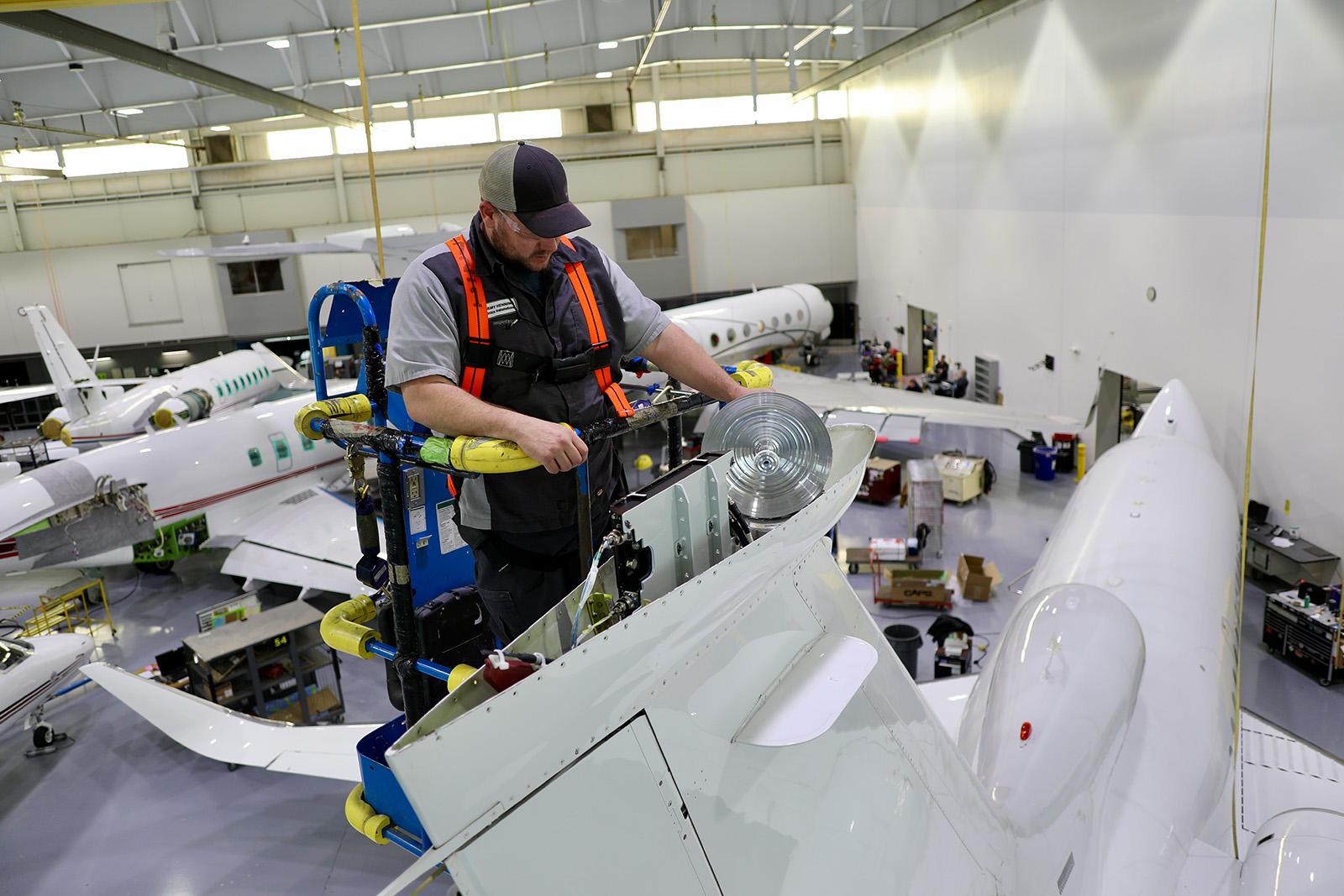
A maintenance technician inspects a JetWave tail-mounted antenna.
Honeywell is developing the next generation of its JetWave satellite communications (satcom) system, a planned multinetwork-capable satcom terminal that will deliver data speeds of up to 100 Mbps to aircraft.
About 1,150 business aircraft are fitted with the current JetWave system, which connects to Inmarsat’s Global Xpress (GX) Ka-band satellite network for Jet ConneX (JX) broadband service. At the European Business Aviation Convention & Exhibition (EBACE) conference in May, Inmarsat announced JX Evolution, an upgrade designed to vastly increase inflight download speeds.
New JetWave terminals, targeted for certification in 2023, will connect with Inmarsat’s current and future geostationary (GEO) and highly elliptical-orbit satellites. They will also connect to other Ka -band satellites operating at medium Earth orbit (MEO) and low Earth orbit (LEO). Honeywell says it is working with unnamed MEO satellite companies to make JetWave compatible with their networks.
“One of the features of the next generation of JetWave is the ability to be network-agnostic to any satellites around the Ka frequency,” says Jason Wissink, Honeywell Connected Aerospace vice president of sales. “The current generation of JetWave works with Inmarsat’s GX constellation. The next generation of JetWave will still work with Inmarsat’s GX constellation, including all their future satellites. But we’re also working with other Ka satellite [companies] to be able to provide service on their networks with the exact same equipment.”
Integrating with a LEO-based Ka -band network—Wissink mentions Telesat—is also a possibility but “a little further down the road than 2023,” he says. Telesat Lightspeed, based on 188 LEO satellites, will support both mechanically steered and newer electronically steered antennas (ESA). Telesat is working with different terminal suppliers; in August 2021, it announced a teaming agreement to integrate ThinKom Solutions’ Ka2517 ESA antennas with the network.
Honeywell JetWave consists of a tail-mounted, MCS-8000 high-gain antenna for business aviation (or MCS-8100 fuselage-mounted antenna for airliners) and a common radio frequency and antenna controller, modem and router. The next-generation JetWave terminal will consolidate some line replaceable units (LRU) and add an auxiliary modem unit (AMU) as a separate component to connect with different networks.
“You swap that out; it’s a small 2-MCU [module size] LRU,” Wissink explains. “If you want to move from one network to another or potentially want access to two networks, you can have two AMUs installed or you can have just one and you could swap it out in the future. We broke that out as a separate LRU to provide that multinetwork flexibility and ease the transition from one network to another.”
In May, Inmarsat said initial testing of its JX Evolution upgrade had demonstrated data speeds in excess of 130 Mbps based on five current satellites. At 130 Mbps, a standard high-definition movie of 3 GB in size would take 23 sec. to download, the company says.
JetWave will continue using a mechanically steered tail-mounted antenna as Honeywell surveys the field of ESA technology alternatives.
“We’re constantly working with industry partners on electronically steered antenna technology, specifically in the Ka spectrum,” Wissink confirms. “We don’t anticipate anything being available by the end of next year that is commercially scalable and certified.”
“Our intent is to use the next generation of JetWave as a potential steppingstone,” he adds. “The next generation will provide some really nice increases in performance and capability for customers over the next few years. As that ESA technology matures, once it’s to the point that we’re looking for, especially from a power consumption point of view, we will then have the capability to integrate that type of antenna into our JetWave architecture. We’re just waiting for the right time, until it is truly ready and scalable for business aviation.”
